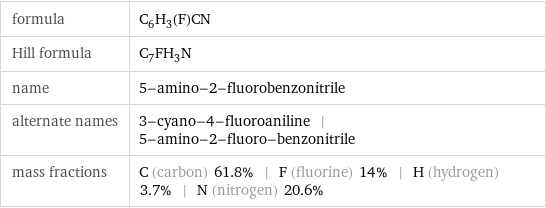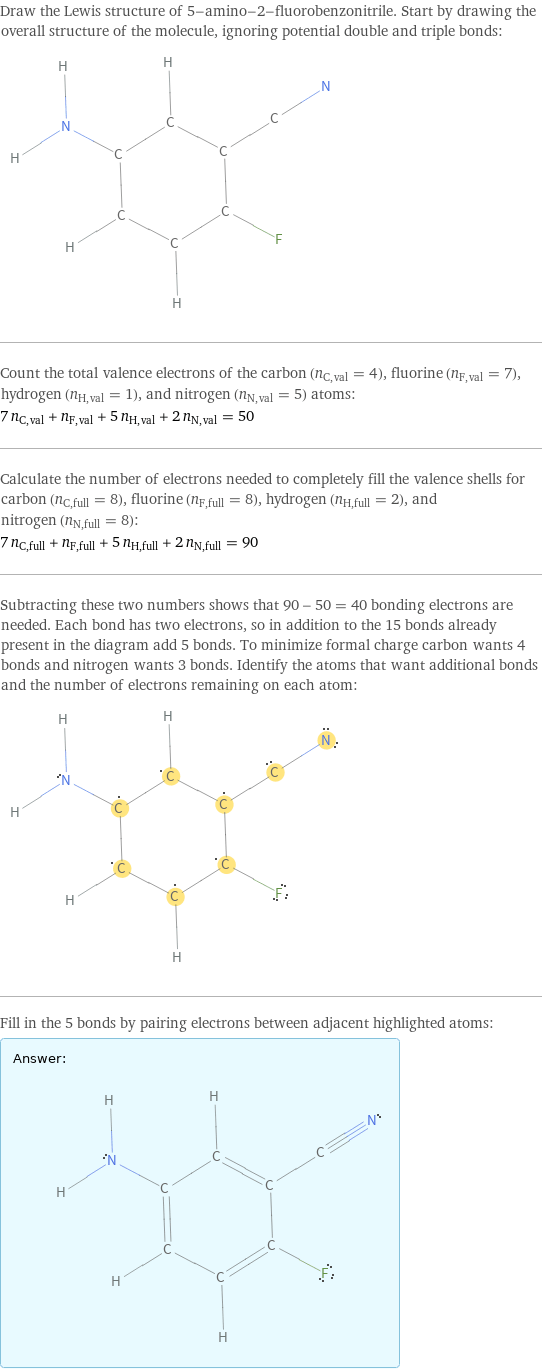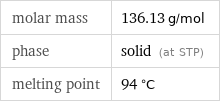Input interpretation

5-amino-2-fluorobenzonitrile
Chemical names and formulas

formula | C_6H_3(F)CN Hill formula | C_7FH_3N name | 5-amino-2-fluorobenzonitrile alternate names | 3-cyano-4-fluoroaniline | 5-amino-2-fluoro-benzonitrile mass fractions | C (carbon) 61.8% | F (fluorine) 14% | H (hydrogen) 3.7% | N (nitrogen) 20.6%
Lewis structure

Draw the Lewis structure of 5-amino-2-fluorobenzonitrile. Start by drawing the overall structure of the molecule, ignoring potential double and triple bonds: Count the total valence electrons of the carbon (n_C, val = 4), fluorine (n_F, val = 7), hydrogen (n_H, val = 1), and nitrogen (n_N, val = 5) atoms: 7 n_C, val + n_F, val + 5 n_H, val + 2 n_N, val = 50 Calculate the number of electrons needed to completely fill the valence shells for carbon (n_C, full = 8), fluorine (n_F, full = 8), hydrogen (n_H, full = 2), and nitrogen (n_N, full = 8): 7 n_C, full + n_F, full + 5 n_H, full + 2 n_N, full = 90 Subtracting these two numbers shows that 90 - 50 = 40 bonding electrons are needed. Each bond has two electrons, so in addition to the 15 bonds already present in the diagram add 5 bonds. To minimize formal charge carbon wants 4 bonds and nitrogen wants 3 bonds. Identify the atoms that want additional bonds and the number of electrons remaining on each atom: Fill in the 5 bonds by pairing electrons between adjacent highlighted atoms: Answer: | |
Basic properties

molar mass | 136.13 g/mol phase | solid (at STP) melting point | 94 °C
Units

Chemical identifiers

CAS number | 53312-81-5 SMILES identifier | C1=C(C=C(C#N)C(=C1)F)N MDL number | MFCD00277872